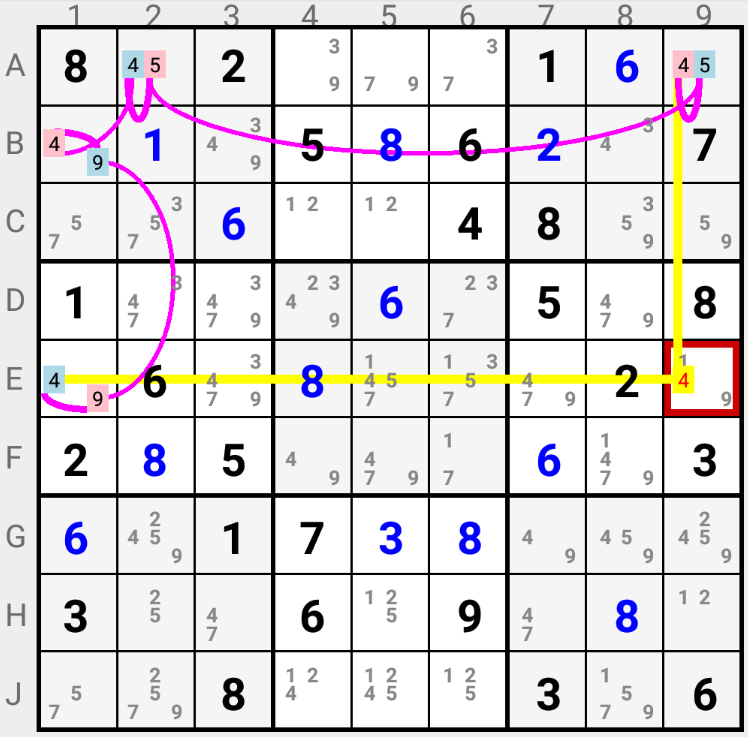XY-Chain
If we consider a "Bi-Value" Cell, asserting that one of its candidates is not the solution implies that its other candidate must be the solution. Hence there exists a Strong Link (also see note at the bottom of this page) between the two candidates of a "Bi-Value" Cell.
In the XY-CHAIN strategy we build chains consisting of Strong Links inside "Bi-Value" Cells and Weak Links between these "Bi-Value" Cells. The chain always starts with a Strong Link and it always ends with a Strong Link.
If we can build a chain that is not a loop and that starts and ends on the same candidate, then any Cell that sees both ends of the chain can not have that candidate as its solution.
Indeed, a candidate in such a Cell simultaneously "sees" a candidate that is the start of a Strong Link and a candidate that is the end of another Strong Link, whichever the direction the chain is read. As the candidate at the end of a Strong Link must be the solution for that Cell, it can not be the solution for any Cell that "sees" it.

In the example, depending the direction used to read the Chain, candidate 4 is the end point of a Strong Link either in E1, or in A9. So it must be the solution in one of these Cells. As candidate 4 in E9 sees both Cells, it can be eliminated.
NB: more formally, a Strong Link is the relationship that exists between two Cells in a region (Row, Column or Square) when these two Cells are the only Cells in that region
that contain a particular candidate: if the candidate is not the solution for the first Cell, then it must be the solution for the second Cell, and vice-versa.
However, in the Chaining Strategies, we consider Strong Links as links going from a Cell or a group of Cells
where we assert the candidate is not the solution (we say the candidate is in the "OFF" state)
to a Cell or a group of Cells where it then must be the solution (we say the candidate is in the "ON" state).
If we consider a Bi-Value Cell, asserting that one of its candidates is not the solution implies that the other candidate must be the solution.
Hence there also exists a Strong Link between the two candidates of a "Bi-Value" Cell.
A Weak Link as a link going from a Cell/group of Cells where the candidate is "ON" to a Cell/group of Cells where it is "OFF".
You can practice this strategy by installing the SudokuCoach application on your Android™ device.
